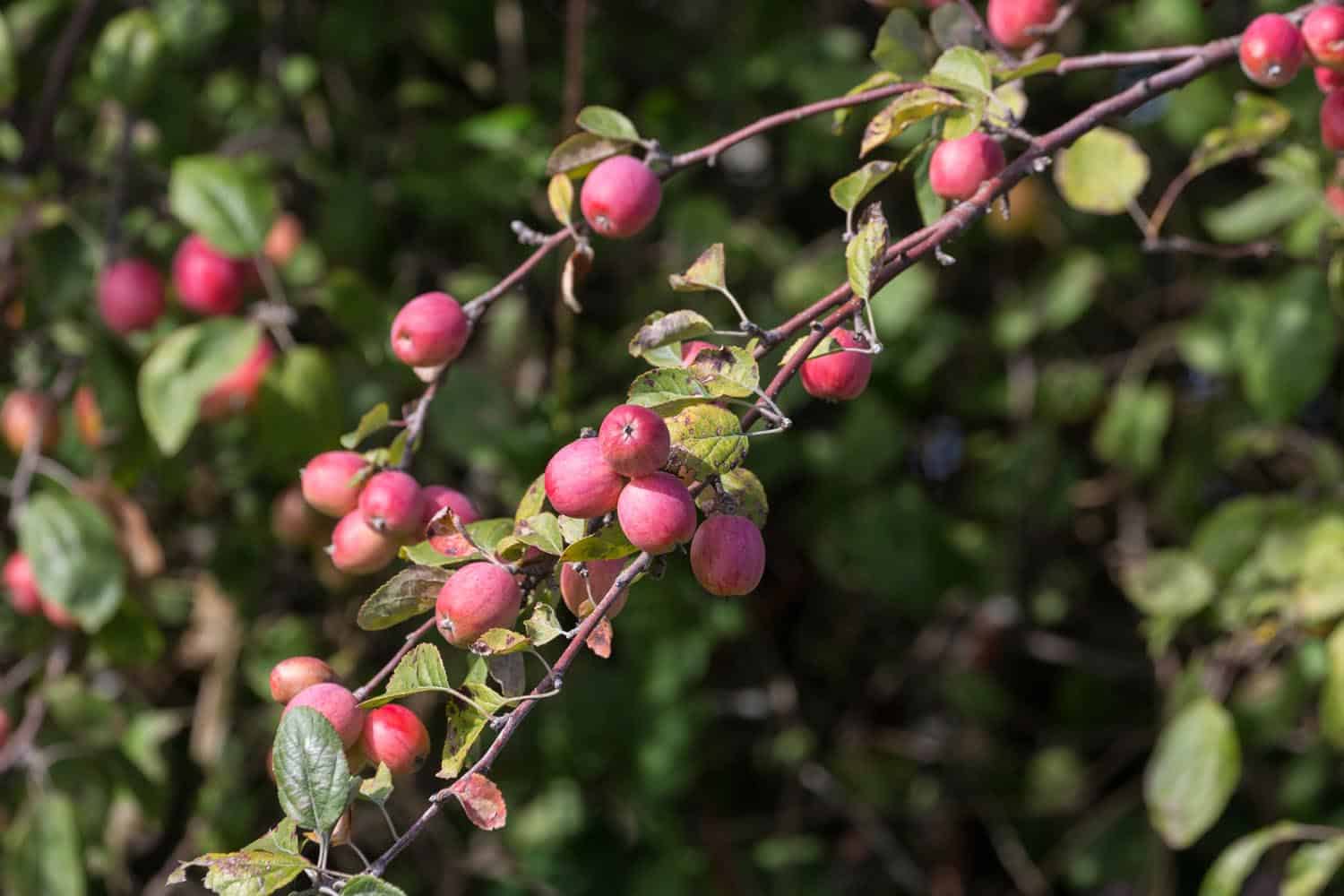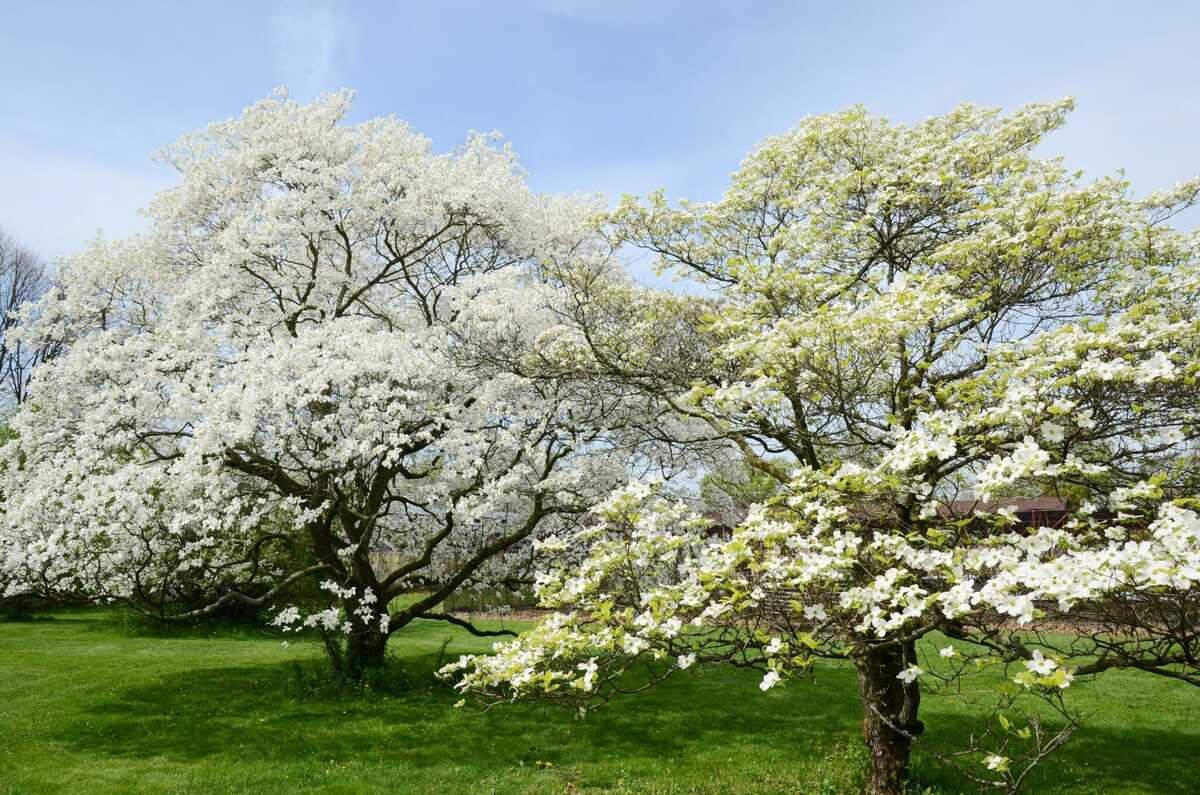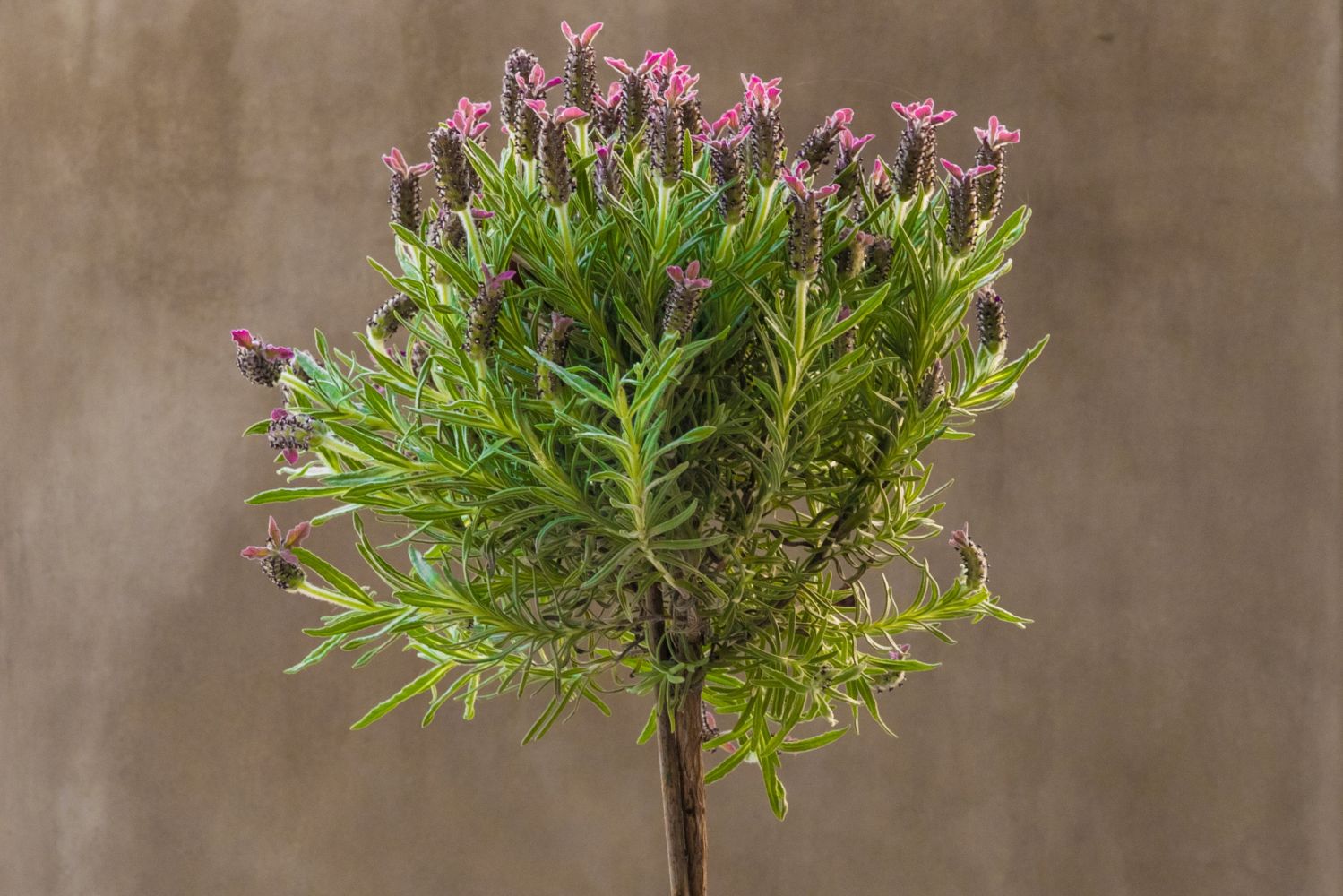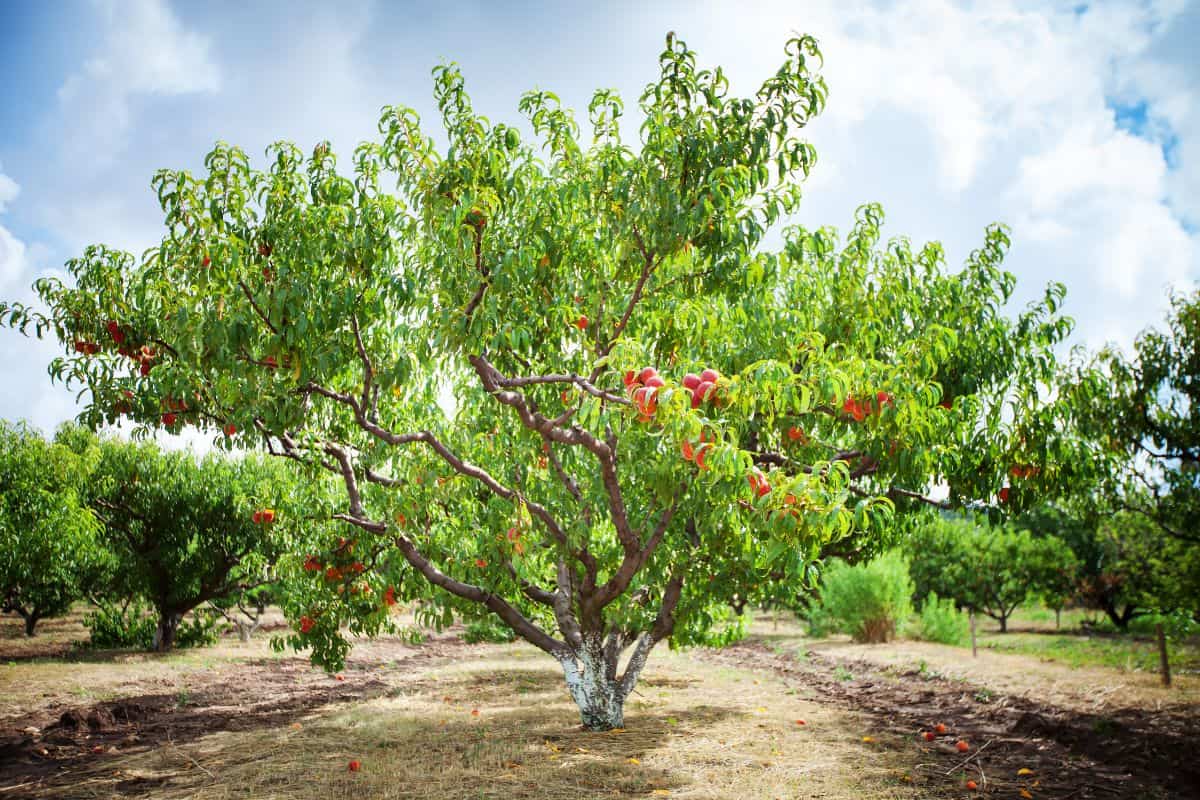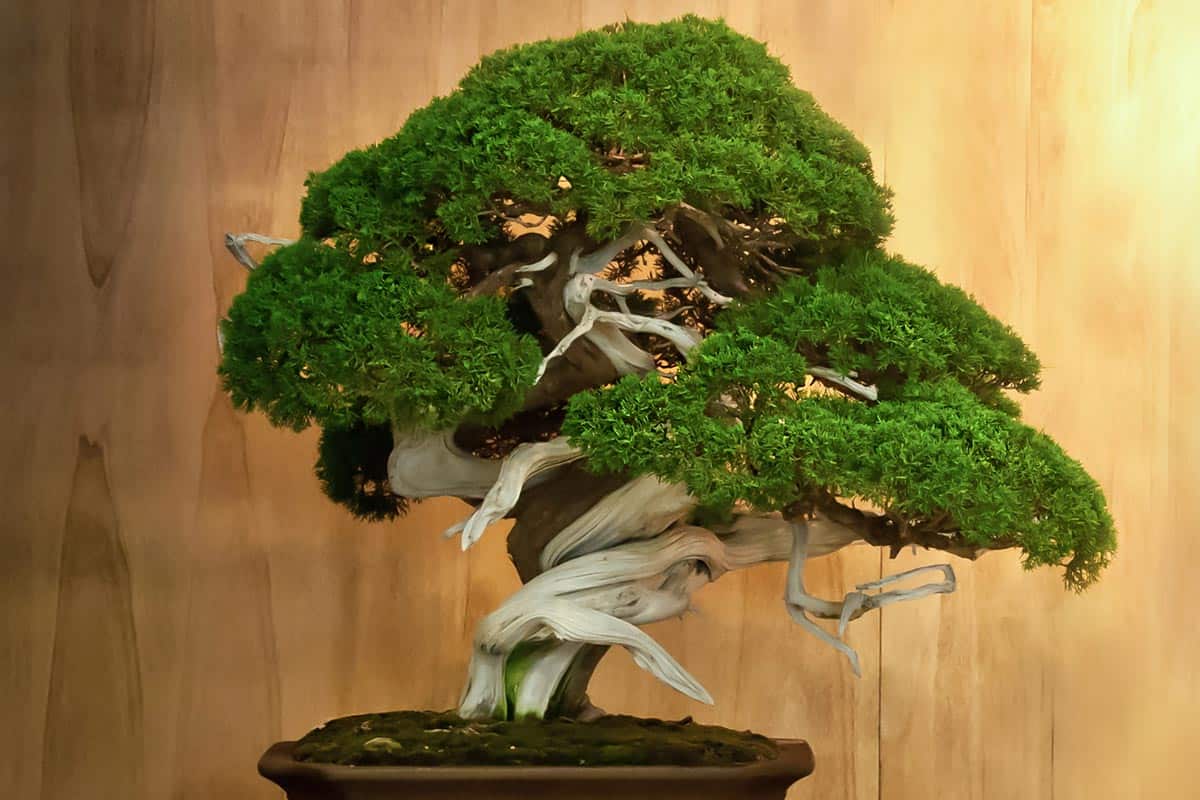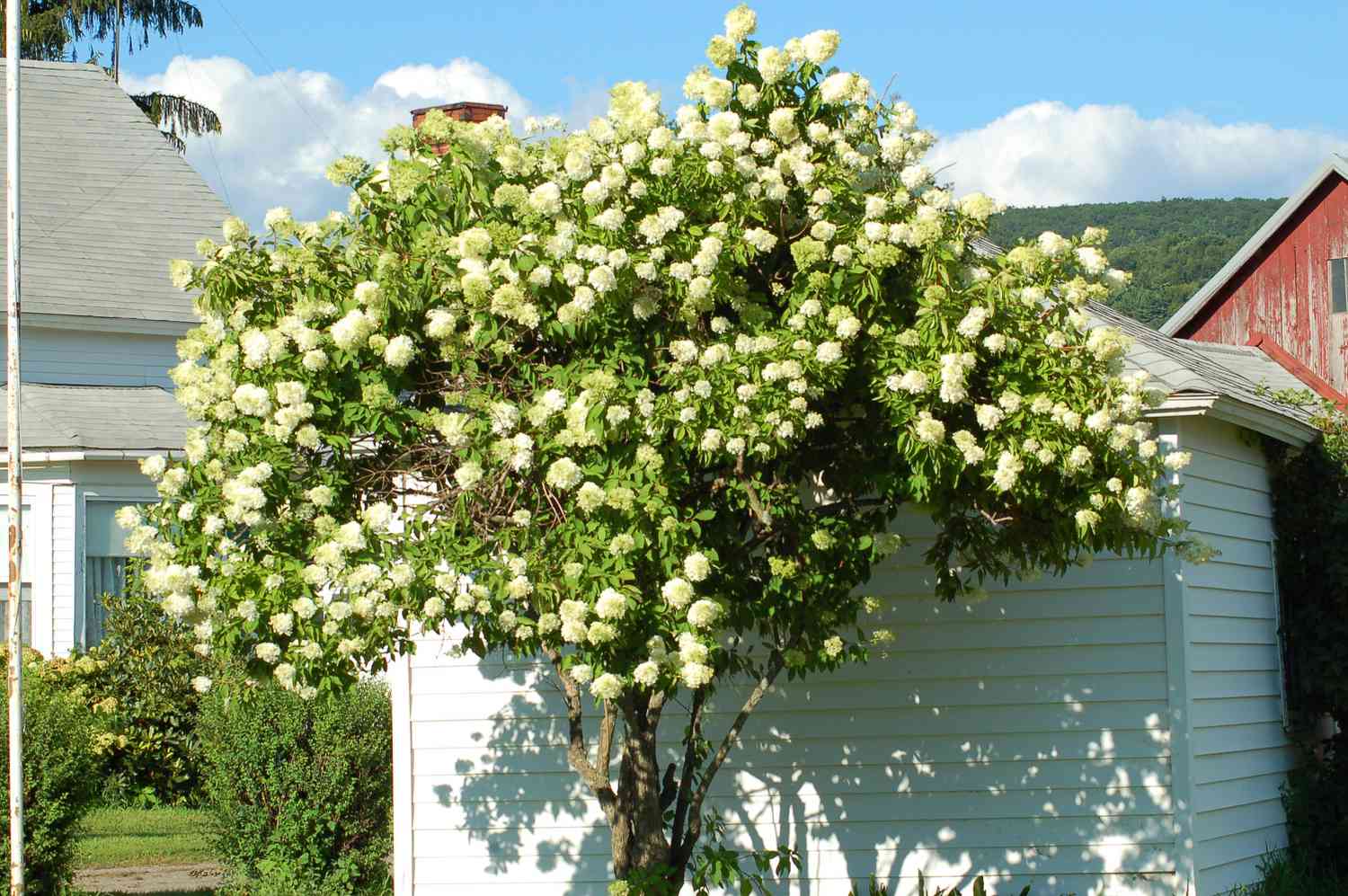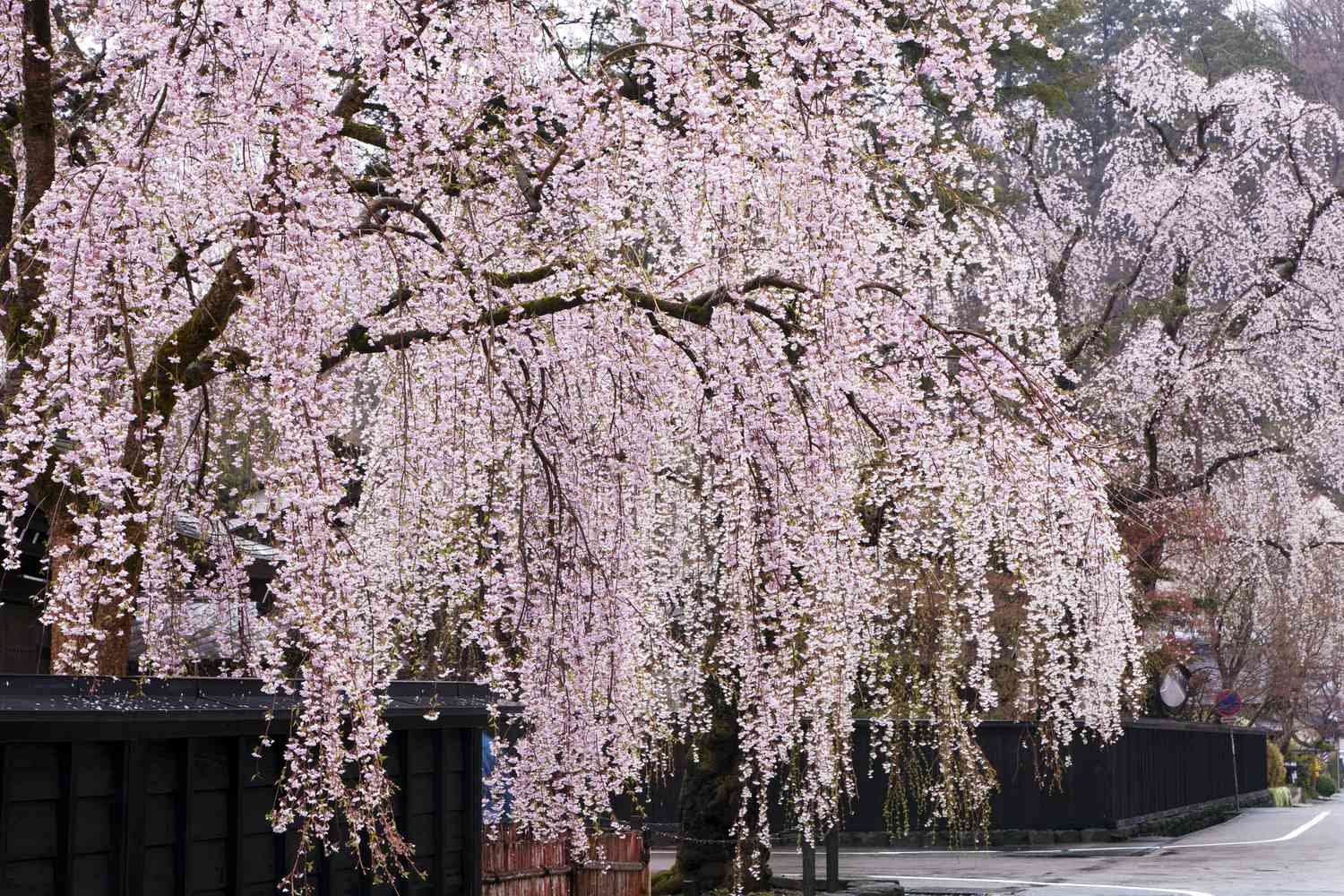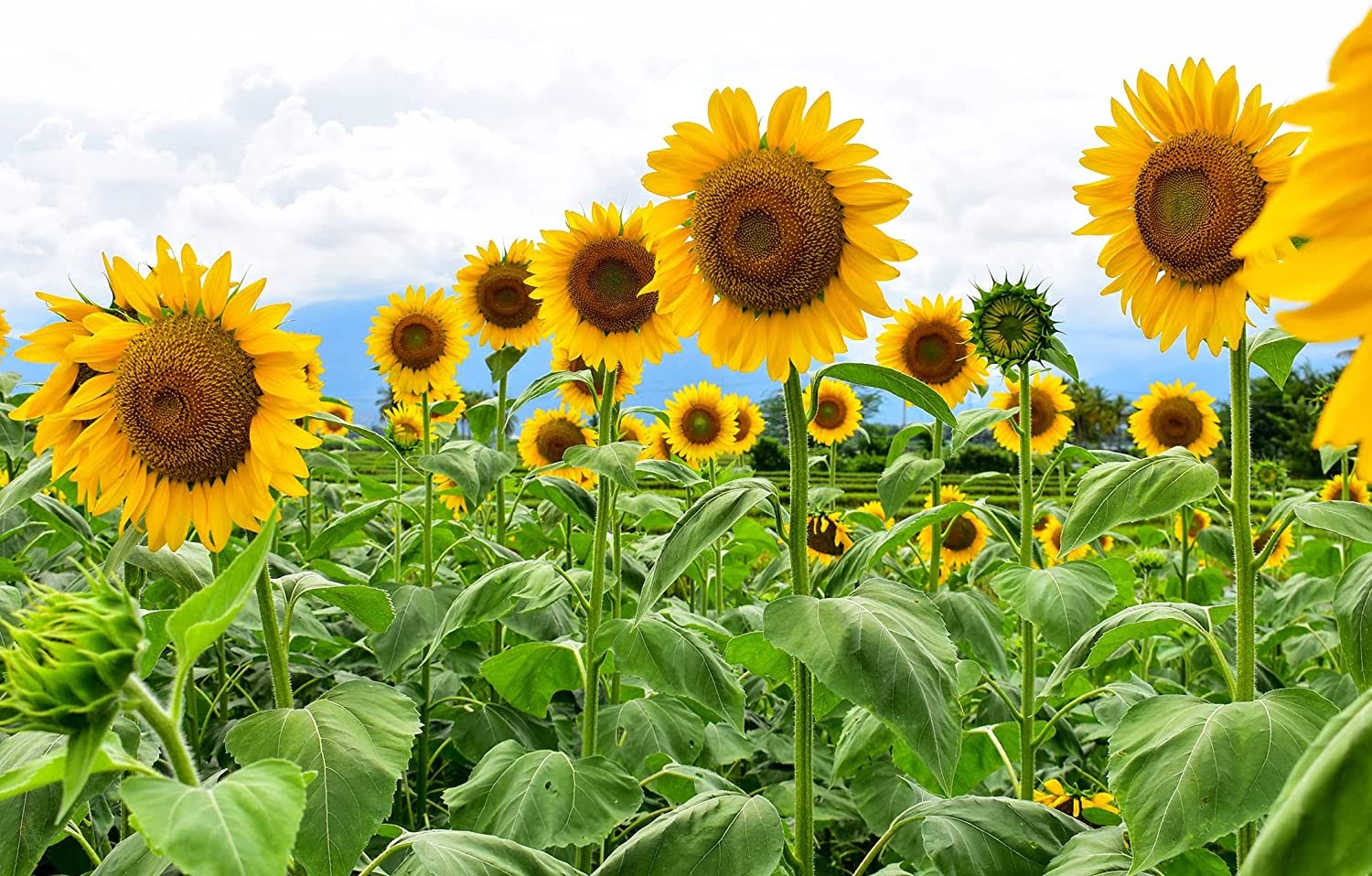Home>Gardening Techniques>Plant Care>How Big Do Plum Trees Get


Plant Care
How Big Do Plum Trees Get
Modified: January 22, 2024
Discover essential plant care tips for growing plum trees and learn how big they can get. Ensure your plum trees thrive with proper care and maintenance.
(Many of the links in this article redirect to a specific reviewed product. Your purchase of these products through affiliate links helps to generate commission for Chicagolandgardening.com, at no extra cost. Learn more)
Table of Contents
Introduction
A plum tree is a beautiful addition to any garden or orchard, providing not only lush green foliage but also delicious fruits. However, before planting a plum tree, it’s important to consider its potential size and how it will fit into your landscape. Understanding the factors that can affect the size of a plum tree can help you make an informed decision and plan accordingly.
The size of a plum tree can vary greatly depending on several factors, including the variety, rootstock, and growing conditions. Certain plum tree varieties are naturally smaller or larger than others, while the choice of rootstock can also influence the final size of the tree. Additionally, factors such as appropriate pruning techniques, soil conditions, and adequate space can all contribute to the overall size of a plum tree.
Having a clear understanding of the potential size of a plum tree is crucial for proper planning and maintaining a healthy and productive tree. If you have limited space or want to manage the size of your plum tree for easier maintenance, choosing a specific variety or utilizing pruning techniques can help you achieve your desired outcome. On the other hand, if you have ample space and prefer a larger, more visually striking tree, there are varieties available that grow to substantial heights.
In this article, we will explore the various factors that can affect the size of plum trees and provide information on the average height and width of both dwarf and standard varieties. We will also discuss pruning techniques that can be utilized to control the size of plum trees and offer tips on selecting the right variety based on your specific needs and preferences. By the end of this article, you will have a better understanding of how big plum trees can get and be equipped with the knowledge to make informed choices for your garden or orchard.
Factors Affecting the Size of Plum Trees
Several factors play a significant role in determining the size of plum trees. Understanding these factors can help you anticipate the potential growth and size of your plum tree.
1. Variety: The variety of plum tree you choose will have a direct impact on its size. Some plum varieties are naturally smaller and more compact, while others can reach towering heights. It’s important to research the specific varieties and their growth characteristics before making a selection.
2. Rootstock: The choice of rootstock also influences the size of a plum tree. Rootstocks are used to control the growth rate and vigor of the tree. There are dwarfing rootstocks that can be used to keep the tree small, as well as vigorous rootstocks that promote larger tree sizes.
3. Growing Conditions: The growing conditions, including soil fertility, moisture levels, and sunlight exposure, can affect the size of a plum tree. Plum trees thrive in well-drained soil that is rich in organic matter. Adequate sunlight is also crucial for healthy growth and fruit production.
4. Pruning: Pruning is an essential technique to control the size of plum trees. Regular and strategic pruning helps maintain the shape and size of the tree by removing excess branches and promoting proper airflow and light penetration. Pruning should be done during the dormant season to avoid interfering with fruiting.
5. Space: The available space plays a vital role in determining the size of a plum tree. If you have limited space, choosing a dwarf or semi-dwarf variety is recommended. These smaller varieties are better suited for small gardens or containers. However, if you have ample space, you can opt for standard varieties that can grow to their maximum potential.
6. Fertilization: Proper fertilization is crucial for the healthy growth of plum trees. Providing the necessary nutrients, such as nitrogen, phosphorus, and potassium, can promote vigorous growth. However, excessive fertilization can lead to overly vigorous growth, so it’s important to follow recommended guidelines.
7. Climate: The climate of your region can influence the size of plum trees. Plum trees require a certain number of chilling hours in winter to initiate proper growth and fruit production. Different varieties have different chilling hour requirements, so it’s important to choose varieties that are well-suited to your climate.
By considering these factors, you can have a better understanding of how they can affect the size and growth of your plum tree. This knowledge will help you make informed decisions when selecting a variety and implementing appropriate cultivation practices for your plum tree.
Average Height and Width of Plum Trees
The height and width of plum trees can vary depending on the variety and the growing conditions. Understanding the average size of plum trees can assist you in planning and ensuring that adequate space is available for the tree to grow.
Dwarf Varieties: Dwarf plum trees are ideal for small gardens, containers, or limited space. These varieties are specifically bred to remain compact and reach a smaller size compared to standard plum trees. On average, dwarf plum trees can grow to a height of 6 to 8 feet (1.8 to 2.4 meters). The width of the tree can range from 4 to 6 feet (1.2 to 1.8 meters). Some popular dwarf plum tree varieties include ‘Santa Rosa’ and ‘Methley.’
Standard Varieties: Standard plum trees, also known as full-size plum trees, can grow much larger compared to their dwarf counterparts. These trees require more space and are suitable for larger gardens or orchards. On average, standard plum trees can reach a height of 15 to 20 feet (4.6 to 6.1 meters). The width of the tree can span between 10 to 15 feet (3 to 4.6 meters). Notable standard plum tree varieties include ‘Stanley’ and ‘Shiro.’
It’s important to note that these average sizes are not set in stone, as variations can occur depending on the specific variety, rootstock, and growing conditions. Some plum trees may exceed the average height and width, while others may remain slightly smaller. Regular pruning and proper maintenance can also influence the overall size and shape of the tree.
When planning the placement of your plum trees, consider the estimated size of the tree at maturity. Allow sufficient distance between trees and other structures to provide ample space for growth and maintenance. Adequate spacing not only ensures healthy growth but also facilitates proper sunlight exposure and good air circulation, reducing the risk of diseases.
By selecting the appropriate variety and considering the average height and width, you can ensure that your plum tree fits harmoniously into your garden or orchard while allowing it to reach its maximum potential.
Dwarf Varieties of Plum Trees
Dwarf plum trees are a perfect choice for those with limited space or smaller gardens. These compact varieties of plum trees offer the same delicious fruits as their larger counterparts but in a more manageable size. Let’s explore some popular dwarf plum tree varieties and their characteristics.
1. Santa Rosa: Santa Rosa is one of the most popular dwarf plum tree varieties, known for its sweet and juicy fruits. It typically reaches a height of 6 to 8 feet (1.8 to 2.4 meters) and has a spread of 4 to 6 feet (1.2 to 1.8 meters). The tree produces medium-sized, dark purple plums with a tangy flavor that is perfect for fresh eating or making jams and preserves.
2. Methley: Methley is another dwarf plum tree variety that is highly regarded for its abundant fruit production. It grows to a similar height of 6 to 8 feet (1.8 to 2.4 meters) but has a slightly narrower spread of 4 to 5 feet (1.2 to 1.5 meters). The plums of Methley are small to medium-sized and have a red skin with sweet, juicy flesh. They are ideal for eating fresh and can also be used for cooking and baking.
3. Beauty: Beauty is a dwarf plum tree variety with a more spreading growth habit. It can reach a height of 8 to 10 feet (2.4 to 3 meters) and has a spread of 6 to 8 feet (1.8 to 2.4 meters). The plums of Beauty are large and deep purple, with a sweet and aromatic flavor. This variety is highly sought after for its ornamental value due to its beautiful spring blossoms and attractive foliage throughout the growing season.
4. Pixy: Pixy plum trees are known for their compact and columnar growth habit, making them a fantastic choice for small spaces or container gardening. They typically reach a height of 6 to 8 feet (1.8 to 2.4 meters) but have a narrow spread of only 2 to 3 feet (0.6 to 0.9 meters). Pixy plum trees produce small to medium-sized plums with a vibrant red skin and sweet, juicy flesh. They are excellent for fresh eating, cooking, and preserving.
Dwarf plum trees offer the advantage of ease of maintenance, as they require less space and pruning compared to larger varieties. They are also easier to harvest and manage, making them an excellent choice for home gardeners. Whether you have a small backyard, a patio, or a balcony, you can enjoy the beauty and bounty of plum trees with these compact and productive dwarf varieties.
Standard Varieties of Plum Trees
Standard plum trees are the traditional, full-size plum trees that can reach impressive heights and widths. These varieties are widely grown in orchards and larger gardens, where space is not a constraint. Let’s explore some popular standard plum tree varieties and their characteristics.
1. Stanley: Stanley is a classic standard plum tree variety known for its exceptional fruit quality and versatility. It can grow to a height of 15 to 20 feet (4.6 to 6.1 meters) with a spread of 10 to 15 feet (3 to 4.6 meters). The fruits of Stanley are large and oval-shaped with dark purple skin. They have a sweet, rich flavor and are widely used for canning, baking, and making jams and jellies.
2. Shiro: Shiro is an exquisite standard plum tree variety with a spreading growth habit. It typically reaches a height of 15 to 20 feet (4.6 to 6.1 meters) and has a spread of 12 to 15 feet (3.7 to 4.6 meters). The plums of Shiro are medium-sized and have a golden-yellow skin with sweet, juicy flesh. They are delicious for eating fresh and can also be used for cooking and preserving.
3. Damson: Damson plum trees are standard-sized trees known for their tart-flavored fruits. They can grow to a height of 15 to 20 feet (4.6 to 6.1 meters) and have a spread of 10 to 12 feet (3 to 3.7 meters). Damson plums are small and round with a dark blue or purple skin. While they are not commonly eaten fresh due to their tartness, they are prized for making jams, jellies, and preserves.
4. Burbank: Burbank is a well-established standard plum tree variety that produces a heavy crop of sweet and juicy fruits. It can grow to a height of 15 to 20 feet (4.6 to 6.1 meters) with a spread of 12 to 15 feet (3.7 to 4.6 meters). The plums of Burbank are large and have a red or purplish skin with yellow flesh. They are excellent for fresh eating and can be used for a variety of culinary purposes.
Standard plum trees bring a sense of grandeur to any landscape with their impressive size and bountiful harvests. They require ample space to thrive and may need regular pruning to maintain shape and size. Whether you’re growing them for their delicious fruits or as an ornamental centerpiece in your garden, standard plum trees are sure to make a striking statement.
Pruning Techniques to Control the Size of Plum Trees
Pruning is an essential practice when it comes to managing the size and shape of plum trees. Proper pruning techniques can help control the growth of the tree, promote fruit production, and maintain its overall health. Here are some key pruning techniques to consider:
1. Winter Pruning: Plum trees should be pruned during the dormant season, preferably in late winter or early spring before new growth begins. This allows the tree to heal and recover from pruning cuts before the growing season starts.
2. Thinning: Thinning involves the selective removal of branches within the canopy to improve airflow and light penetration. It helps reduce the overall density of the tree and prevents overcrowding. Remove any branches that are crossing, rubbing, or growing towards the center of the tree.
3. Heading Back: Heading back refers to cutting back the length of branches to encourage side shoot development. This technique is effective in controlling the height and overall size of the tree. Use clean, sharp pruning shears to make heading cuts just above a bud or lateral branch.
4. Canopy Reduction: If your plum tree has grown too large, you may consider canopy reduction to reduce its size. Canopy reduction involves selectively pruning back the outermost branches, taking care to maintain a balanced shape. Gradual reduction is recommended to avoid excessive stress on the tree.
5. Open Center Pruning: Open center pruning, also known as vase pruning, involves training the plum tree to have an open and balanced structure. It involves removing the central leader and encouraging the growth of multiple scaffold branches, which radiate outwards. This allows for better light penetration and air circulation throughout the tree.
6. Regular Maintenance Pruning: Regular maintenance pruning should be done annually to remove dead, damaged, or diseased branches. This helps maintain the tree’s overall health and allows for the development of new, productive growth. Always sterilize your pruning tools between cuts to prevent the spread of diseases.
7. Prune to Stimulate Fruit Production: When pruning plum trees, it’s important to strike a balance between size control and fruit production. Avoid excessive pruning, as it can reduce fruiting. Instead, focus on thinning out crowded areas, opening up the canopy, and creating space for new shoots to develop and bear fruits.
Remember, each plum tree is unique, so pruning techniques may vary depending on the tree’s growth habit, variety, and overall health. Observe the tree carefully and adapt your pruning approach accordingly. With proper pruning, you can effectively manage the size of your plum tree while promoting its overall vitality and productivity.
Conclusion
Understanding the factors that affect the size of plum trees is crucial for successful cultivation and maintenance. The variety, rootstock, growing conditions, pruning techniques, available space, fertilization, and climate all play a role in determining the ultimate size of the tree.
Dwarf varieties of plum trees, such as Santa Rosa, Methley, Beauty, and Pixy, offer a compact option for those with limited space or smaller gardens. These trees typically reach a height of 6 to 8 feet, making them suitable for container gardening or small landscapes.
Standard plum trees, including Stanley, Shiro, Damson, and Burbank, are the traditional, full-size varieties that can grow to impressive heights of 15 to 20 feet or more. These larger trees are suited for larger gardens and orchards, where they can showcase their grandeur and produce abundant fruits.
To control the size of plum trees, proper pruning techniques can be employed. Winter pruning, thinning, heading back, canopy reduction, open center pruning, and regular maintenance pruning all contribute to shaping and managing the growth of the tree. It’s important to strike a balance between size control and fruit production when pruning, preserving the tree’s health and promoting a bountiful harvest.
In conclusion, by taking into consideration the various factors affecting plum tree size and implementing appropriate pruning techniques, you can successfully manage the size of your plum trees. Whether you choose a compact dwarf variety or a majestic standard variety, you can enjoy the beauty, productivity, and delicious fruits that plum trees have to offer.
